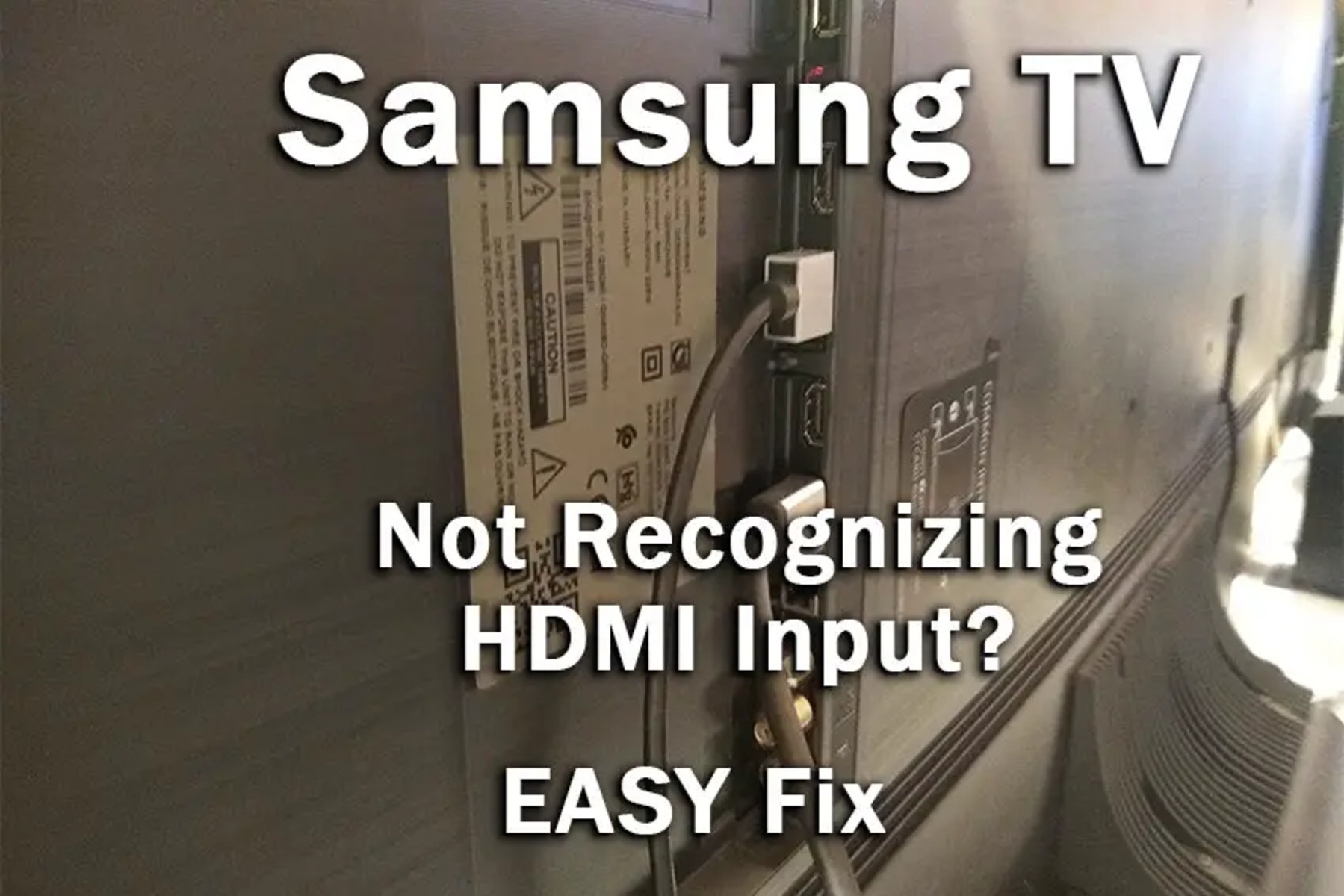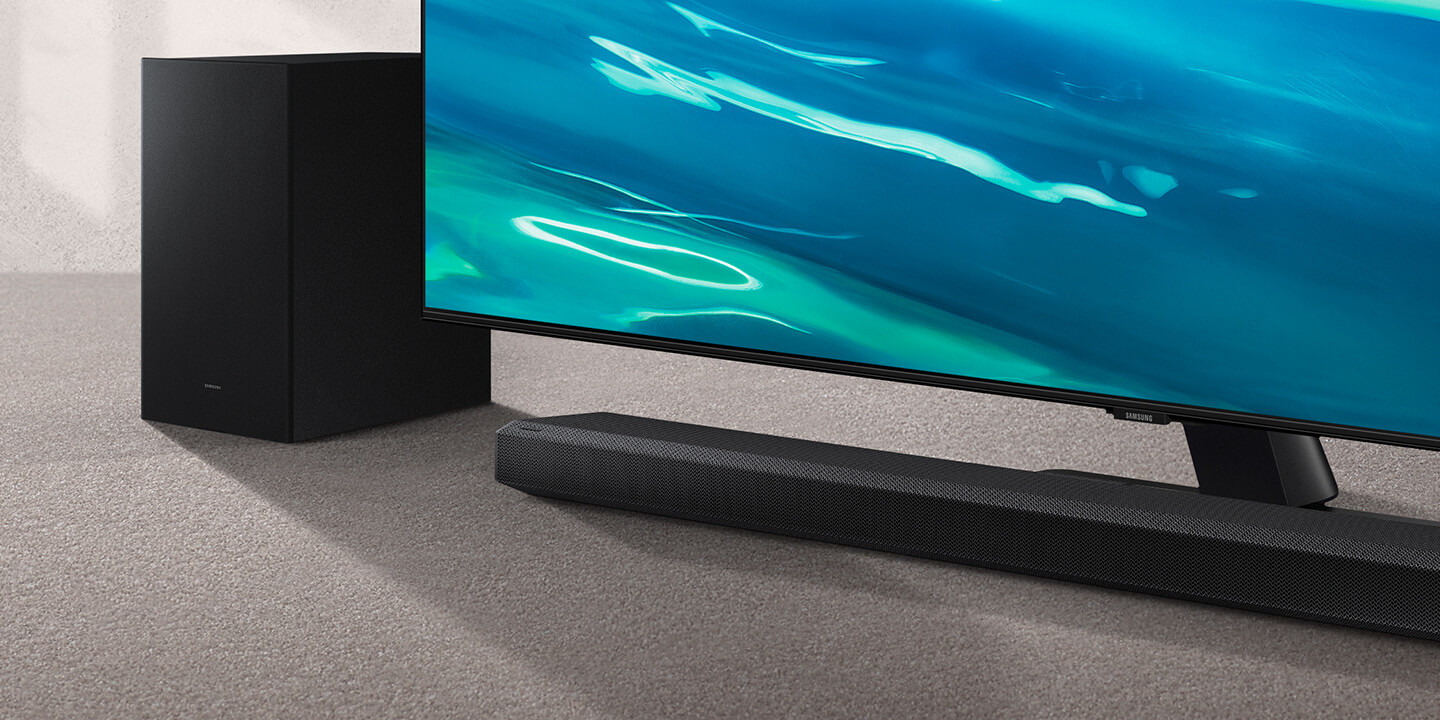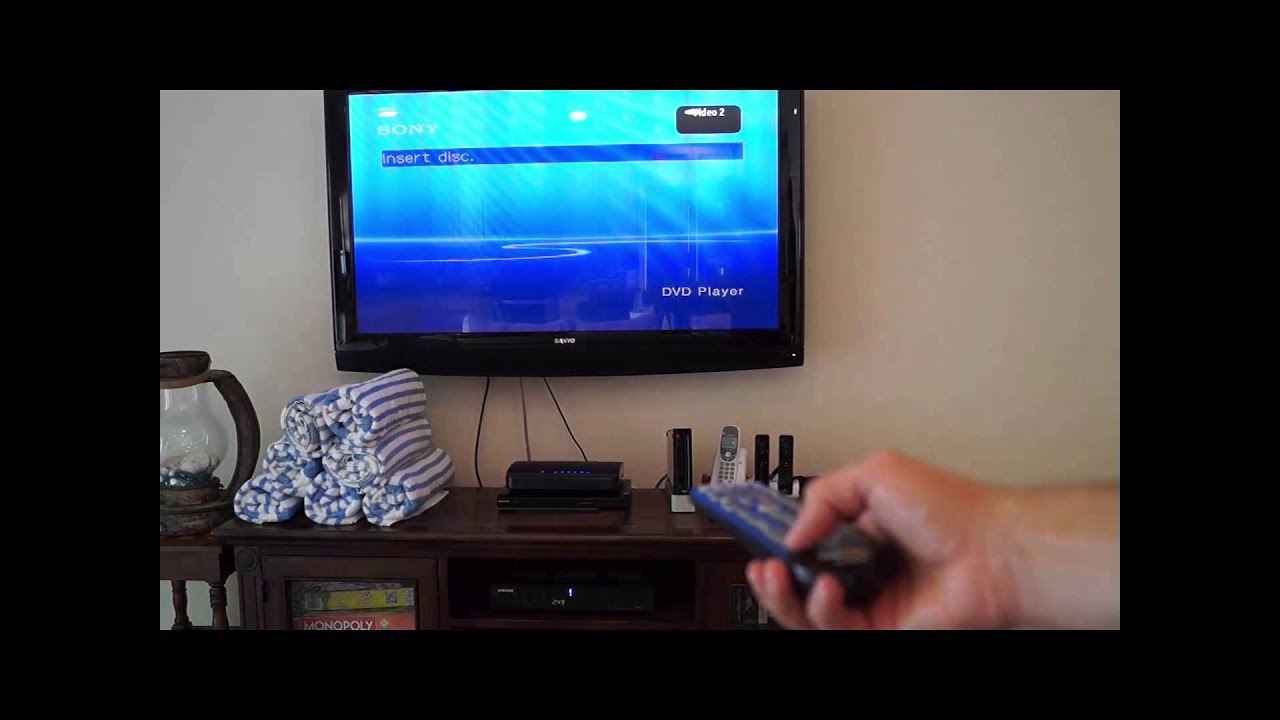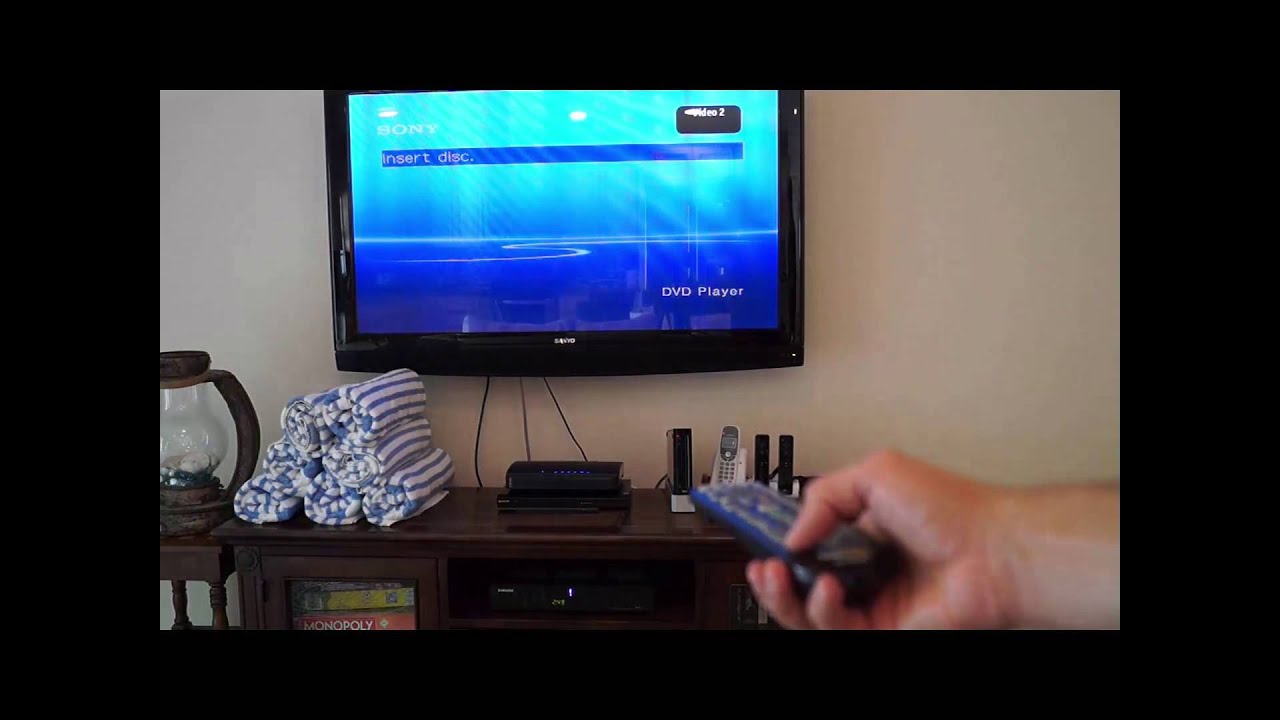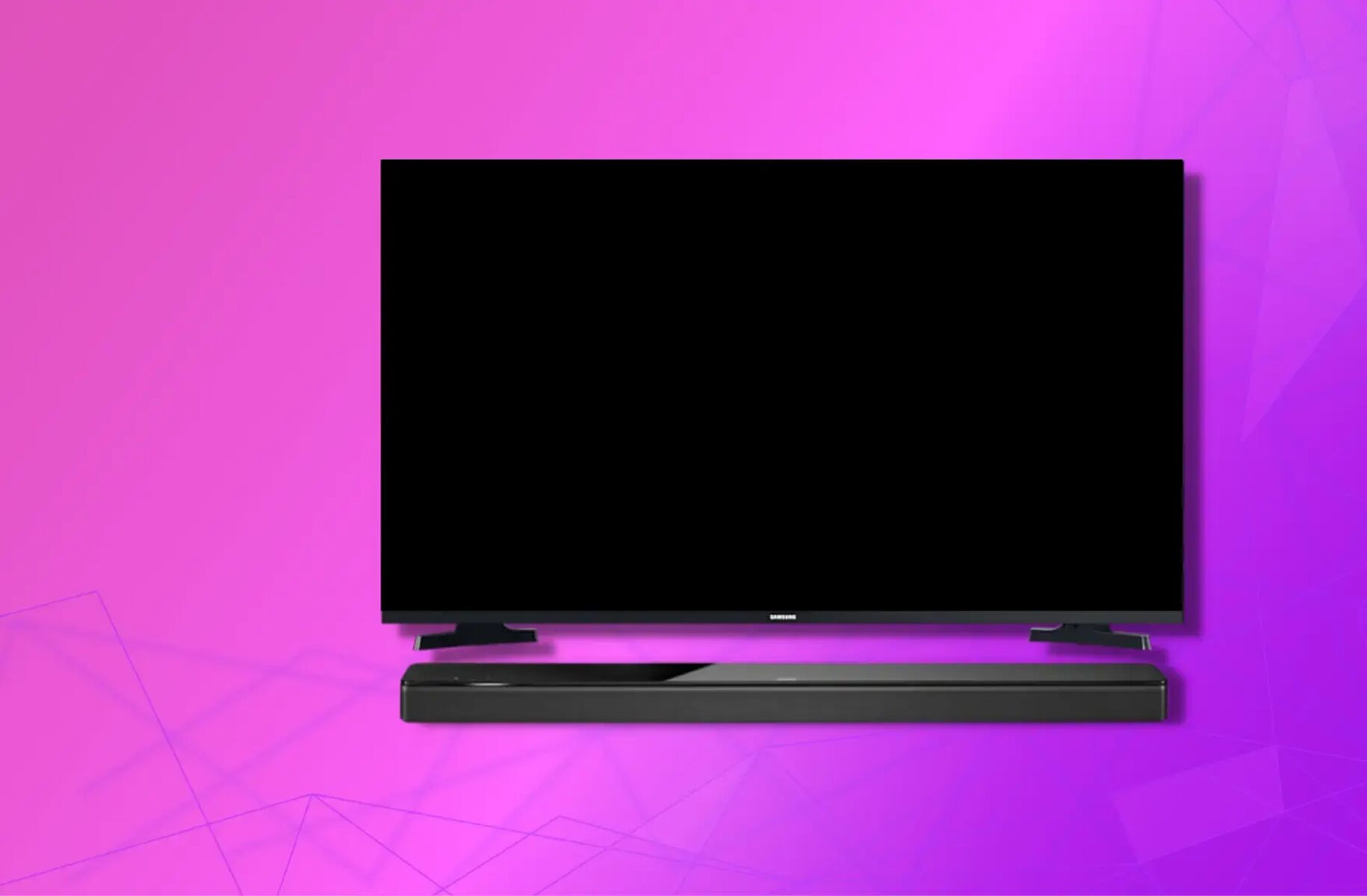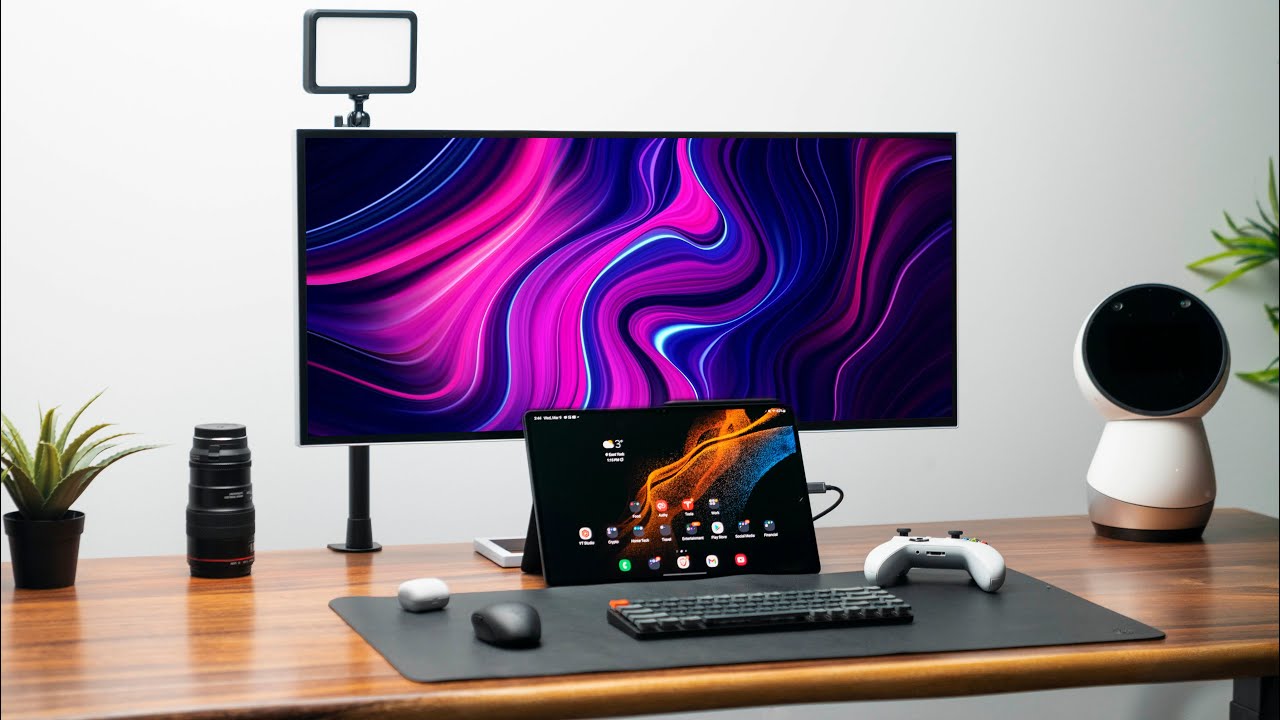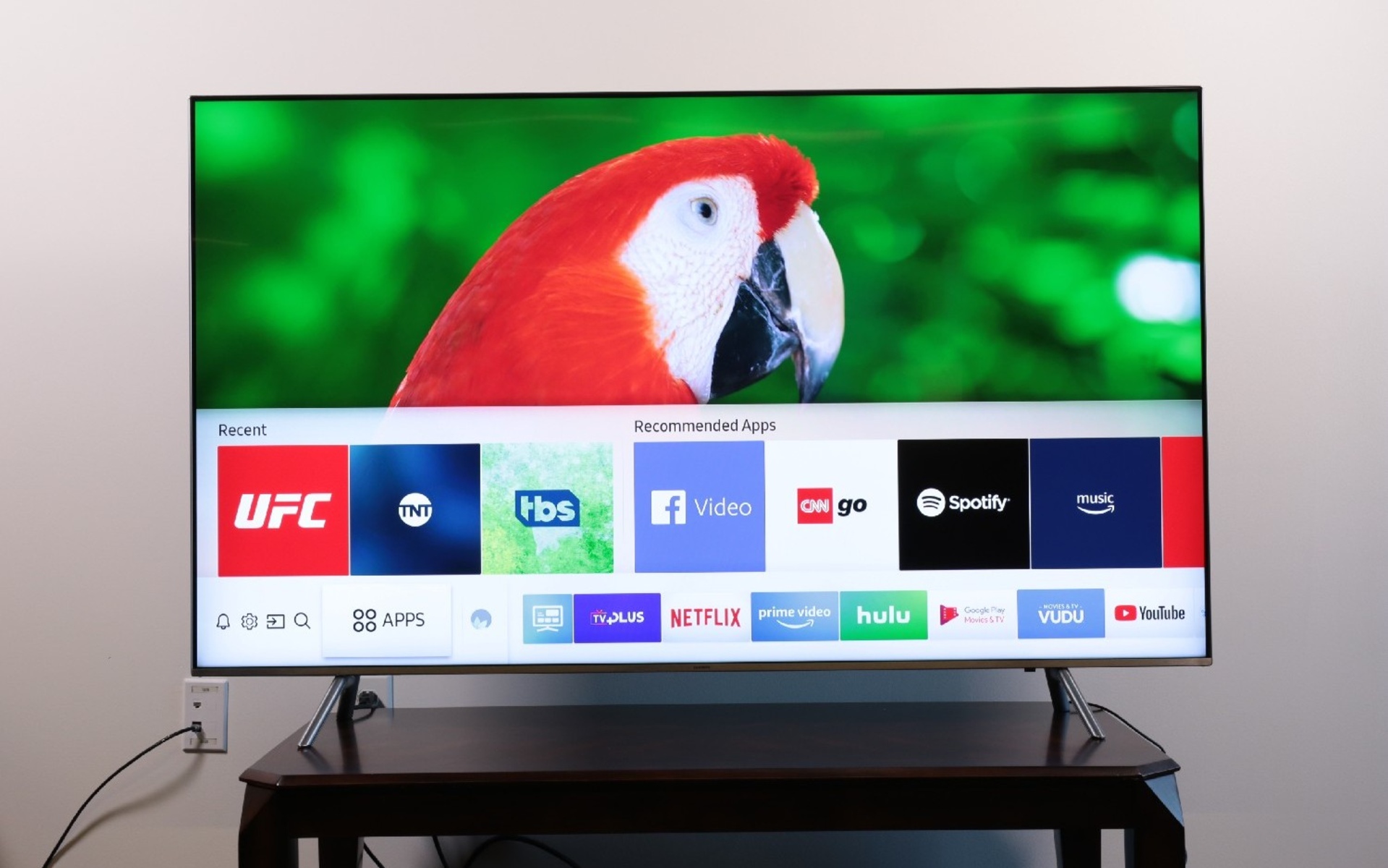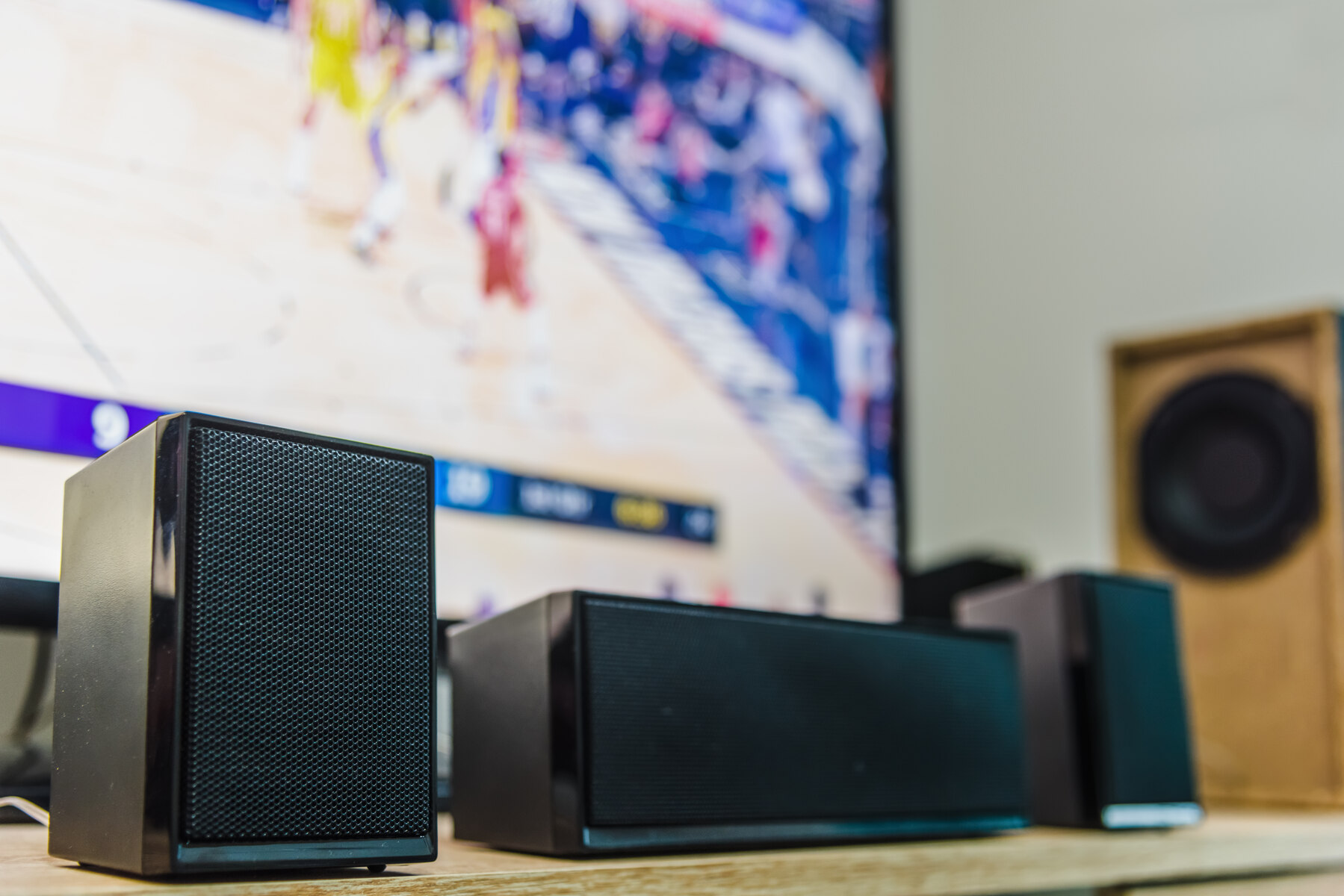Why isn’t my Samsung TV recognizing HDMI?
Connecting your Samsung TV to external devices through HDMI is a convenient way to enjoy high-quality audio and video. However, it can be frustrating when your TV fails to recognize HDMI inputs. Before delving into troubleshooting steps, it’s important to understand the possible causes of this issue.
One common reason is a loose or improper connection between the HDMI cable and the HDMI ports on both the TV and the source device. If the cable isn’t securely plugged in or if there’s any damage, it can prevent the TV from detecting the HDMI signal.
Another factor to consider is whether the correct HDMI input is selected on your TV. Samsung TVs often have multiple HDMI ports, so if you have connected your device to a different HDMI input than the one currently selected on your TV, it won’t detect the signal.
Additionally, power cycling your TV and the HDMI source device can resolve many temporary glitches. Sometimes, both devices need to be completely powered off and then restarted to establish a proper HDMI connection.
Outdated firmware on your Samsung TV can also cause HDMI recognition issues. Checking for and installing any available firmware updates may solve the problem.
In some cases, the HDMI ports on your TV may need to be reset. This can be done by unplugging the TV from the power source, waiting for a few minutes, and then plugging it back in.
A misconfiguration of HDMI audio settings on your TV can also lead to recognition problems. Make sure the audio output is set to HDMI, as some TVs have the option to output audio through other sources like internal speakers or external speakers.
If the above steps don’t resolve the issue, there is a possibility that the HDMI cable or port is faulty. Trying a different HDMI cable or switching to a different HDMI port on your TV can help determine if this is the case.
If all else fails, it’s recommended to reach out to Samsung support for further assistance. They can provide more specific troubleshooting steps based on your TV model and offer guidance to resolve the HDMI recognition problem.
Troubleshooting steps to fix HDMI recognition issues
If your Samsung TV is not recognizing HDMI inputs, you can follow these troubleshooting steps to resolve the issue:
- Check cable and port connections: Ensure that the HDMI cable is securely connected to both the TV and the external device. If there are multiple HDMI ports on your TV, try connecting the cable to a different port to rule out any port-specific issues.
- Select the correct HDMI input: Use your TV’s remote control to navigate to the input/source menu and select the appropriate HDMI input. Sometimes, the TV may default to a different input or have an auto-detect feature that needs manual adjustment.
- Power cycle devices: Turn off both your TV and the HDMI source device (such as a cable box or gaming console). Unplug the power cords from both devices and wait for about 30 seconds. Then, reconnect the power cords and turn on the devices. This power cycle can help reset any temporary glitches causing the HDMI recognition issue.
- Update TV firmware: Ensure that your Samsung TV has the latest firmware installed. Visit the Samsung support website and search for your TV model to find any available firmware updates. Follow the instructions provided to update the firmware, as it can address compatibility issues and improve HDMI recognition.
- Reset HDMI ports: If none of the above steps work, you can try resetting the HDMI ports on your TV. Unplug the TV from the power source, wait for a few minutes, and then plug it back in. This reset can help refresh the HDMI connection and resolve any underlying issues.
- Verify HDMI audio settings: Check the audio settings on your TV to ensure that it is set to output audio through the HDMI connection. Some TVs have separate audio settings that may default to internal speakers or external audio devices. Adjust the settings accordingly to enable audio output through HDMI.
- Try a different HDMI cable or port: If possible, try using a different HDMI cable to rule out any cable-related issues. You can also switch to a different HDMI port on your TV to check if the problem lies with a specific port.
If after following these troubleshooting steps, your Samsung TV still fails to recognize HDMI inputs, it is recommended to contact Samsung support for further assistance. They can provide personalized guidance and additional troubleshooting options based on your TV model and specific circumstances.
Ensure HDMI cable and ports are properly connected
One of the primary reasons for HDMI recognition issues on your Samsung TV could be improper connections. It’s important to ensure that both the HDMI cable and the HDMI ports are properly connected. Here are some steps to follow:
- Check the HDMI cable: Examine the HDMI cable for any visible damage, such as frayed ends or bent pins. If you find any issues, consider replacing the cable with a new one that is in good condition.
- Connect the cable to the TV: Take one end of the HDMI cable and insert it securely into one of the HDMI ports on the back of your Samsung TV. Ensure that the cable fits snugly into the port without any looseness.
- Connect the cable to the source device: Take the other end of the HDMI cable and connect it to the HDMI output port on your external device, such as a cable box, DVD player, or gaming console. Again, ensure a secure and proper connection.
- Verify the direction of the cable: HDMI cables have distinct sides. Some cables are labeled as “Input” and “Output” or have arrows indicating the correct direction. Make sure you have connected the cable in the proper orientation, matching the direction of the signals.
- Consider using high-quality HDMI cables: Low-quality or generic HDMI cables may not provide a reliable connection. Investing in high-quality, certified HDMI cables can help ensure a solid connection and optimal performance.
- Test different HDMI ports: If your Samsung TV has multiple HDMI ports, try connecting the HDMI cable to a different port. This can help determine if the issue is specific to a particular port. It’s possible that a certain port may be faulty or experiencing connection problems.
By double-checking the HDMI cable and properly connecting it to the HDMI ports on both your Samsung TV and the source device, you can eliminate any potential issues arising from loose or damaged connections. This troubleshooting step is a crucial starting point to address HDMI recognition problems and should be carried out before moving on to other troubleshooting methods.
Check if the HDMI input is selected on your TV
If your Samsung TV is not recognizing HDMI inputs, one of the possible reasons could be that the incorrect HDMI input is selected on your TV. Here’s how to check and ensure the correct input is chosen:
- Access the input/source menu: Locate the remote control that came with your Samsung TV and look for the “Input” or “Source” button. Press this button to access the input/source menu on your TV.
- Navigate through the input options: Use the arrow keys on your remote to navigate through the input options displayed on the TV screen. Look for the HDMI input that corresponds to the HDMI port where you have connected your external device.
- Select the correct HDMI input: Once you’ve identified the HDMI input connected to your external device, press the corresponding button on your remote to select it. The TV screen should switch to display the content from the HDMI source.
- Verify the input selection: Take a moment to ensure that the selected HDMI input is indeed displaying the content from your external device. Double-check that you have chosen the correct HDMI input for the device you want to use, especially if there are multiple HDMI ports on your TV.
- Use input labels: If your Samsung TV supports it, you can assign labels to the various input sources. This can make it easier to identify the correct HDMI input when switching between devices. Check your TV’s settings menu for options related to input labeling.
It’s important to note that some Samsung TVs have an auto-detect feature that automatically selects the HDMI input when a signal is detected. However, this feature may not always work as intended, so manually selecting the HDMI input is a more reliable approach.
By verifying and selecting the correct HDMI input on your Samsung TV, you can ensure that the TV recognizes the HDMI signal from your external device. This simple step can often resolve HDMI recognition issues and allow you to enjoy your favorite content seamlessly.
Power cycle both your TV and HDMI source device
If your Samsung TV is not recognizing HDMI inputs, performing a power cycle on both your TV and HDMI source device can help resolve the issue. Power cycling involves completely turning off the devices and then restarting them. Here’s how to do it:
- Turn off your TV: Locate the power button on your Samsung TV or use the remote control to turn off the TV. Make sure the TV is completely powered down.
- Unplug the power cord: Once the TV is turned off, unplug the power cord from the electrical outlet. This ensures that the TV is completely disconnected from the power source.
- Power off the HDMI source device: If you have an external device, such as a cable box, Blu-ray player, or gaming console connected to your TV via HDMI, turn off that device as well. Use its power button or remote control to shut it down.
- Disconnect HDMI cable: Carefully unplug the HDMI cable from both the TV and the HDMI source device. Ensure that the cable is fully disconnected from both ends.
- Wait for a few minutes: Let both the TV and the HDMI source device sit without power for at least a couple of minutes. This allows any residual electrical charge to dissipate.
- Plug in the power cord and HDMI cable: Once the waiting period is over, plug the power cord back into the electrical outlet and reconnect the HDMI cable to both the TV and the HDMI source device. Ensure a secure connection.
- Turn on the devices: Power on your TV and then turn on the HDMI source device. Use the respective power buttons or remotes to power up the devices.
- Select the HDMI input: After the TV and HDMI source device have booted up, ensure that the correct HDMI input is selected on your Samsung TV. Use the TV’s remote control to navigate to the input/source menu and choose the appropriate HDMI input.
Performing a power cycle on both your TV and HDMI source device can help reset any temporary glitches that may be causing the HDMI recognition issue. This simple but effective troubleshooting step is often successful in restoring the HDMI connection and allowing you to use your external device seamlessly.
Update firmware on your Samsung TV
If you are experiencing HDMI recognition issues with your Samsung TV, it’s worth considering whether the firmware on your TV is up to date. Firmware updates can often address compatibility issues and bugs, and may help resolve HDMI-related problems. Here’s how to update the firmware on your Samsung TV:
- Check your TV model: Determine the model number of your Samsung TV. You can find this information on the back of the TV or in the TV’s settings menu.
- Access the Samsung support website: Visit the Samsung support website using a computer or mobile device. Look for the support section and search for the firmware downloads for your specific TV model.
- Download the latest firmware: Locate and download the latest firmware update file for your Samsung TV model. Make sure to choose the correct firmware for your TV’s specific model number.
- Prepare a USB flash drive: Insert a compatible USB flash drive into your computer. Format the USB drive using the FAT32 file system. Ensure that the USB drive is empty, as the firmware update file will be copied to it.
- Extract the firmware file: Extract the contents of the firmware update file you downloaded earlier. You should see a file with a “.bin” or “.exe” extension. Copy this file to the root directory of the USB flash drive.
- Disconnect other USB devices: If you have any other USB devices connected to your Samsung TV, unplug them temporarily to prevent any potential conflicts during the firmware update process.
- Connect the USB flash drive to your TV: Turn on your Samsung TV and insert the USB flash drive into one of the USB ports on the TV. Wait for a few moments to allow the TV to recognize the USB drive.
- Start the firmware update: Using your TV’s remote control, navigate to the settings menu and select the “Support” or “Software Update” section. Choose the option to update the firmware, and then select the USB flash drive as the source for the update. Follow the on-screen prompts to initiate the firmware update process.
- Wait for the update to complete: Once the firmware update is in progress, allow the TV to complete the process. Do not turn off the TV or remove the USB drive until the update is finished. This may take several minutes.
- Restart your TV: After the firmware update is complete, the TV will automatically restart. Once it has restarted, check if the HDMI recognition issue is resolved. Test the HDMI connection with your external device to verify if it is now being recognized.
Updating the firmware on your Samsung TV can often provide improvements and fixes that can help resolve HDMI recognition issues. It’s recommended to periodically check for firmware updates and keep your TV up to date for optimal performance.
Reset HDMI ports on your TV
If you’re facing HDMI recognition issues with your Samsung TV, resetting the HDMI ports may help resolve the problem. This process involves power cycling the TV and performing a reset on the HDMI ports. Here’s how to reset the HDMI ports on your TV:
- Turn off your TV: Locate the power button on your Samsung TV or use the remote control to turn it off. Make sure the TV is completely powered down.
- Unplug the power cord: Once the TV is turned off, unplug the power cord from the electrical outlet. This ensures that the TV is completely disconnected from the power source.
- Disconnect HDMI cables: Carefully unplug all HDMI cables connected to your TV. Make sure to remove them from all HDMI ports on the TV.
- Press and hold the power button: On the TV itself, press and hold the power button for at least 10 to 15 seconds. This discharge process helps to clear any residual electricity in the TV’s circuits.
- Plug in the power cord: After the discharge process, plug the power cord back into the electrical outlet. Ensure a secure connection between the TV and the power source.
- Turn on your TV: Press the power button on the TV or use the remote control to turn on your Samsung TV. Allow it to boot up and reach its normal operating state.
- Reconnect HDMI cables: Once the TV is powered on, carefully reconnect the HDMI cables to the HDMI ports on your TV. Ensure that each cable is securely plugged into an appropriate HDMI port.
- Check HDMI recognition: After reconnecting the HDMI cables, navigate to the input/source menu on your TV using the remote control. Select the HDMI input corresponding to the device you want to use and check if the TV now recognizes the HDMI connection.
By power cycling your TV and performing a reset on the HDMI ports, you can clear any potential glitches or issues that were affecting the HDMI recognition. This process essentially refreshes the HDMI connections, allowing your Samsung TV to properly detect and establish a stable connection with your external devices.
Verify HDMI audio settings on your TV
If your Samsung TV is having trouble recognizing HDMI inputs, there may be an issue with the HDMI audio settings. Checking and adjusting these settings can help resolve the problem. Here’s how to verify the HDMI audio settings on your TV:
- Access the settings menu: Using your TV’s remote control, navigate to the settings menu. Look for the “Audio,” “Sound,” or “Sound Settings” option. Different Samsung TV models may have varying menu layouts, so refer to your TV’s user manual if needed.
- Locate the audio output options: Within the audio settings menu, find the options related to audio output or sound output. You may see choices such as “Audio Output,” “Sound Output,” or “Speaker Settings.”
- Select HDMI as the audio output: Within the audio output options, ensure that HDMI is selected as the audio output method. Some TVs have separate settings for audio output, with options like “Internal Speakers,” “External Speakers,” or “HDMI.” Choose the HDMI option to ensure audio is being routed through the HDMI connection.
- Check additional audio settings: Depending on your TV model, there may be additional audio settings that could impact HDMI recognition. Look for options like “Audio Format,” “Digital Audio Out,” or “Audio Output Format.” Make sure these settings are compatible with your HDMI source device and try different settings if necessary.
- Adjust audio volume and other settings: While in the audio settings menu, check the volume level and any other audio-related settings. Ensure that the volume is not muted or too low, and adjust any equalizer or audio enhancement settings as desired.
By verifying and adjusting the HDMI audio settings on your Samsung TV, you can ensure that the audio is correctly routed through the HDMI connection. This step is crucial because some TVs have separate audio settings that may default to other audio sources, such as internal speakers.
If the HDMI audio settings appear to be correct and the TV still doesn’t recognize HDMI inputs, try power cycling both the TV and the HDMI source device. This can often help resolve temporary glitches and establish a proper HDMI connection.
Try a different HDMI cable or port
If your Samsung TV is not recognizing HDMI inputs, it’s possible that the HDMI cable or port is causing the issue. To troubleshoot and resolve this, try the following steps:
- Check the HDMI cable: Inspect the HDMI cable for any visible damage, such as bent or broken pins, or frayed ends. If you find any issues, consider replacing the cable with a new one that is in good condition.
- Try a different HDMI cable: If you have access to another HDMI cable, try using it to connect your TV to the HDMI source device. Sometimes, a faulty or poorly functioning HDMI cable can cause issues with recognition. Using a different cable can help determine if the problem lies with the cable itself.
- Switch to a different HDMI port: If your Samsung TV has multiple HDMI ports, try connecting the HDMI cable to a different port. It’s possible that a specific port on your TV is experiencing connectivity problems. Trying a different port can help determine if the issue is with a particular port.
- Test the HDMI cable and device: If you have access to another TV or HDMI-compatible device, try connecting your HDMI source device and cable to it. If the HDMI connection works on another device, you can narrow down the issue to your Samsung TV.
- Inspect and clean the HDMI ports: Inspect the HDMI ports on your TV to ensure that they are not damaged, obstructed, or filled with debris. If you notice any dirt or debris, gently clean the ports using a can of compressed air or a soft brush. This can help establish a better connection between the cable and the ports.
By trying a different HDMI cable or port, you can rule out any issues with the cable or a specific port on your Samsung TV. If an alternative cable or port resolves the HDMI recognition problem, you may need to replace a faulty cable or contact support for further assistance regarding the specific HDMI port.
If trying a different cable or port does not solve the issue, it is recommended to further troubleshoot by checking the HDMI audio settings, updating the firmware, or contacting Samsung support for further assistance.
Contact Samsung support for further assistance
If you have followed all the troubleshooting steps and your Samsung TV is still not recognizing HDMI inputs, it may be time to reach out to Samsung support for additional help. Their trained technicians can provide expert guidance and assist you in resolving the issue. Here’s how to get in touch with Samsung support:
- Visit the Samsung support website: Go to the official Samsung support website using a computer or mobile device.
- Locate the support section: Look for the support or customer service section on the website. This section usually contains resources and contact options to assist customers with technical issues.
- Search for your TV model: Enter the model number of your Samsung TV in the search bar provided on the support website. This will help you find specific troubleshooting guides and information related to your TV model.
- Check the FAQs and guides: Explore the FAQs and troubleshooting guides available on the support website. Samsung provides comprehensive resources that can help answer common questions and resolve common issues.
- Contact Samsung support: If you have exhausted the available resources and need further assistance, look for the contact options provided on the support website. This may include live chat, email support, or a phone number to reach customer service.
- Explain the issue: When contacting Samsung support, provide a detailed explanation of the HDMI recognition issue you’re facing. Mention the troubleshooting steps you have already tried and the results you have observed.
- Follow the guidance provided: Samsung support will offer you specific troubleshooting steps based on your TV model and the information you provide. Follow their instructions carefully and provide any additional information they may request.
- Consider warranty support: If your Samsung TV is still under warranty, inform the support representative about it. They can guide you on the warranty coverage and assist you accordingly.
By contacting Samsung support, you can take advantage of their expertise and access personalized assistance for resolving the HDMI recognition issue. They can provide further troubleshooting steps, arrange repairs if necessary, or offer any other appropriate solutions.
Remember to keep any relevant information, such as your TV model number and the troubleshooting steps you have already tried, handy when contacting Samsung support. This will help expedite the support process and ensure a smooth resolution to the HDMI recognition problem.







